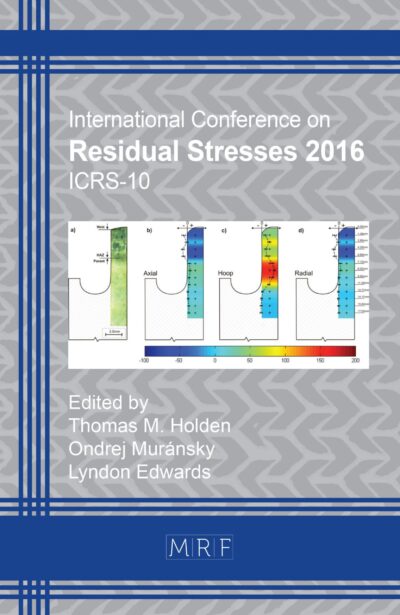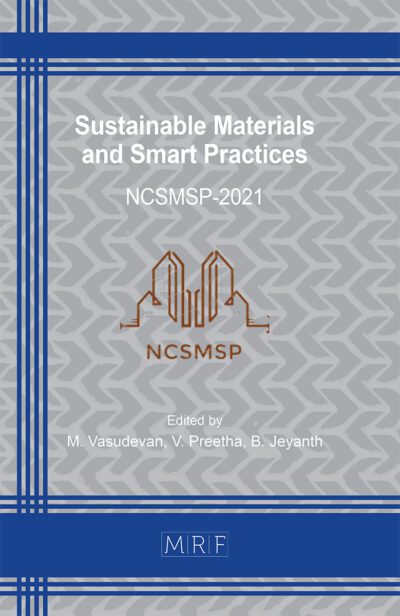3D printing of soft actuators in nano-filled shape memory thermoplastic polyurethane
Luca Burratti, Denise Bellisario, Fabrizio Quadrini, Leandro Iorio, Loredana Santo
Abstract. Today new horizons have opened thanks to the integration of additive manufacturing and shape memory polymers (SMP). Additive manufacturing by fused deposition modelling (FDM) is used to develop new concept soft robotics with SMP. A thermoplastic polyurethane SMP for biomedical uses has been modified by aluminum nanoparticles and multi-walled carbon nanotubes to produce an innovative SMP. The new composite has been extruded to produce the 3D printing wire, which has been used to print a three-dimensional structure. The SM behavior of the composite has been investigated by calorimetry and recovery properties. For comparison the same studies have been carried out to pristine thermoplastic polyurethane. Differential scanning calorimetry, shape fixity and shape recovery ratios, recovery time and recovery force have been investigated for 3D printed structures of pristine and composite samples. The composite demonstrated better results in terms of recovery properties with respect to the pristine material. For this reason, the composite can be a good candidate for soft robotics applications.
Keywords
Shape Memory Polymers, 3D Printing, Soft Robotics, Smart Materials
Published online 5/7/2025, 11 pages
Copyright © 2025 by the author(s)
Published under license by Materials Research Forum LLC., Millersville PA, USA
Citation: Luca Burratti, Denise Bellisario, Fabrizio Quadrini, Leandro Iorio, Loredana Santo, 3D printing of soft actuators in nano-filled shape memory thermoplastic polyurethane, Materials Research Proceedings, Vol. 54, pp 2047-2057, 2025
DOI: https://doi.org/10.21741/9781644903599-220
The article was published as article 220 of the book Material Forming
![]() Content from this work may be used under the terms of the Creative Commons Attribution 3.0 license. Any further distribution of this work must maintain attribution to the author(s) and the title of the work, journal citation and DOI.
Content from this work may be used under the terms of the Creative Commons Attribution 3.0 license. Any further distribution of this work must maintain attribution to the author(s) and the title of the work, journal citation and DOI.
References
[1] Q. Zhao, Sensing Materials: Bio-inspired materials. in: R. Narayan, (Ed), Encyclopedia of sensors and biosensors; Elsevier, 2023 435–444.
[2] C. Majidi, Soft Robotics: A perspective – current trends and prospects for the future. Soft Robot. 1 (2014) 5–11. https://doi.org/10.1089/soro.2013.0001
[3] D. Gonzalez, J. Garcia, R. M. Voyles, R.A. Nawrocki, B. Newell, Characterization of 3D printed pneumatic soft actuator. Sens. Actuators A: Phys., 334 (2022) 113337. https://doi.org/10.1016/j.sna.2021.113337
[4] Z. Ji, P. Jiang, R. Guo, K. R. Hossain, X. Wang, 4D-printed light-responsive structures. in: M. Bodaghi, A. Zolfagharian, (Eds), Smart materials in additive manufacturing, Volume 1 : 4D printing principles and fabrication; Elsevier, 2022. 55–105.
[5] Y. Kim, X. Zhao, Magnetic soft materials and robots. Chem. Rev. 122 (2022) 5317–5364. https://doi.org/10.1021/acs.chemrev.1c00481
[6] M. Y. Khalid, Z.U. Arif, A. Tariq, M. Hossain, K. Ahmed Khan, R. Umer, 3D printing of magneto-active smart materials for advanced actuators and soft robotics applications. Eur. Polym. J. 205 (2024) 112718. https://doi.org/10.1016/j.eurpolymj.2023.112718
[7] C. Lee, M. Kim, Y.J. Kim, N. Hong, S. Ryu, H.J. Kim, S. Kim, Soft robot review. Int. J. Control. Autom. Syst 15 (2017) 3–15. https://doi.org/10.1007/s12555-016-0462-3
[8] Z. Chen, Y. Li, Q. M. Li, Hydrogel-driven origami metamaterials for tunable swelling behavior. Mater. Des. 207 (2021) 109819. https://doi.org/10.1016/j.matdes.2021.109819
[9] S. Chen, J. Chen, X. Zhang, Z.-Y. Li, J. Li, Kirigami/origami: unfolding the new regime of advanced 3D microfabrication/nanofabrication with “folding.” Light Sci. Appl. 9 (2020) 75. https://doi.org/10.1038/s41377-020-0309-9
[10] Y. Yang, Y. Chen, Y. Wei, Y Li, 3D printing of shape memory polymer for functional part fabrication. Int. J. Adv. Manuf. Technol. 84 (2016) 2079–2095. https://doi.org/10.1007/s00170-015-7843-2
[11] J. Wang, Z. Wang, Z. Song, L. Ren, Q. Liu, L. Ren, Biomimetic shape–color double‐responsive 4D printing. Adv. Mater. Technol. 4 (2019). https://doi.org/10.1002/admt.201900293
[12] M. Ramezani, M. B. B. Monroe, Biostable segmented thermoplastic polyurethane shape memory polymers for smart biomedical applications. ACS Appl. Polym. Mater. 4 (2022) 1956–1965. https://doi.org/10.1021/acsapm.1c01808
[13] N. Sabahi, I. Roohani, C. H. Wang, E. Farajzadeh, X. Li, Thermoplastic polyurethane-based shape memory polymers with potential biomedical application: The effect of TPU soft-segment on shape memory effect and cytocompatibility. Polymer 283 (2023) 126189. https://doi.org/10.1016/j.polymer.2023.126189
[14] S. Walker, O. D. Yirmibeşoğlu, U. Daalkhaijav, Y. Mengüç, Additive manufacturing of soft robots in: S.M. Walsh, M.S. Strano, (Eds.), Robotic systems and autonomous platforms; Elsevier, 2019 335–359.
[15] M. H. Yousuf, W. Abuzaid, M. Alkhader, 4D printed auxetic structures with tunable mechanical properties. Addit. Manuf. 35 (2020) 101364. https://doi.org/10.1016/j.addma.2020.101364
[16] K. McLellan, Y.-C. Sun, H. E. Naguib, A review of 4D printing: materials, structures, and designs towards the printing of biomedical wearable devices. Bioprinting 27 (2022) e00217. https://doi.org/10.1016/j.bprint.2022.e00217
[17] S. B. Kumar, J. Jeevamalar, P. Ramu, G. Suresh, K. Senthilnathan, Evaluation in 4D printing – A review. Mater. Today Proc. 45 (2021) 1433–1437. https://doi.org/10.1016/j.matpr.2020.07.335
[18] X. Xu, P. Fan, J. Ren, Y. Cheng, J. Ren, J. Zhao, R. Song, Self-healing thermoplastic polyurethane (TPU)/polycaprolactone (PCL) /multi-wall carbon nanotubes (MWCNTs) blend as shape-memory composites. Compos. Sci. Technol. 168 (2018) 255–262. https://doi.org/10.1016/j.compscitech.2018.10.003
[19] D. Xiang, X. Zhang, E. Harkin-Jones, W. Zhu, Z. Zhou, Y. Shen, Y. Li, C. Zhao, P. Wang, Synergistic effects of hybrid conductive nanofillers on the performance of 3D printed highly elastic strain sensors. Compos. Part A Appl. Sci. Manuf. 129 (2020) 105730. https://doi.org/10.1016/j.compositesa.2019.105730
[20] M. Abrisham, M. Panahi-Sarmad, G. Mir Mohamad Sadeghi, M. Arjmand, P. Dehghan, A. Amirkiai, Microstructural design for enhanced mechanical property and shape memory behavior of polyurethane nanocomposites: Role of carbon nanotube, montmorillonite, and their hybrid fillers. Polym. Test. 89 (2020) 106642. https://doi.org/10.1016/j.polymertesting.2020.106642
[21] Y. Guo, L. Yan, Z. Zeng, L. Chen, M. Ma, R. Luo, J. Bian, H. Lin, D. Chen, TPU/PLA nanocomposites with improved mechanical and shape memory properties fabricated via phase morphology control and incorporation of multi‐walled carbon nanotubes nanofillers. Polym. Eng. Sci. 60 (2020) 1118–1128. https://doi.org/10.1002/pen.25365
[22] M. Panahi-Sarmad, V. Goodarzi, A. Amirkiai, M. Noroozi, M. Abrisham, P. Dehghan, Y. Shakeri, N. Karimpour-Motlagh, F. Poudineh Hajipoor, H. Ali Khonakdar, A. Asefnejad, Programing polyurethane with systematic presence of graphene-oxide (GO) and reduced graphene-oxide (rGO) platelets for adjusting of heat-actuated shape memory properties. Eur. Polym. J. 118 (2019) 619–632. https://doi.org/10.1016/j.eurpolymj.2019.06.034
[23] B. Liu, X. Gu, X. Chen, Y. Yang, J. Zou, H. Yin, Y. Cai, Preparation, shape memory properties and application research of PLA/PCL‐based shape memory polymers doped with Al2O3 and lignin. J. Appl. Polym. Sci. 141 (2024) doi:10.1002/app.55252
[24] J. Zhu, C. Abeykoon, N. Karim, Investigation into the effects of fillers in polymer processing. Int. J. Light. Mater. Manuf. 4 (2021) 370–382. https://doi.org/10.1016/j.ijlmm.2021.04.003














